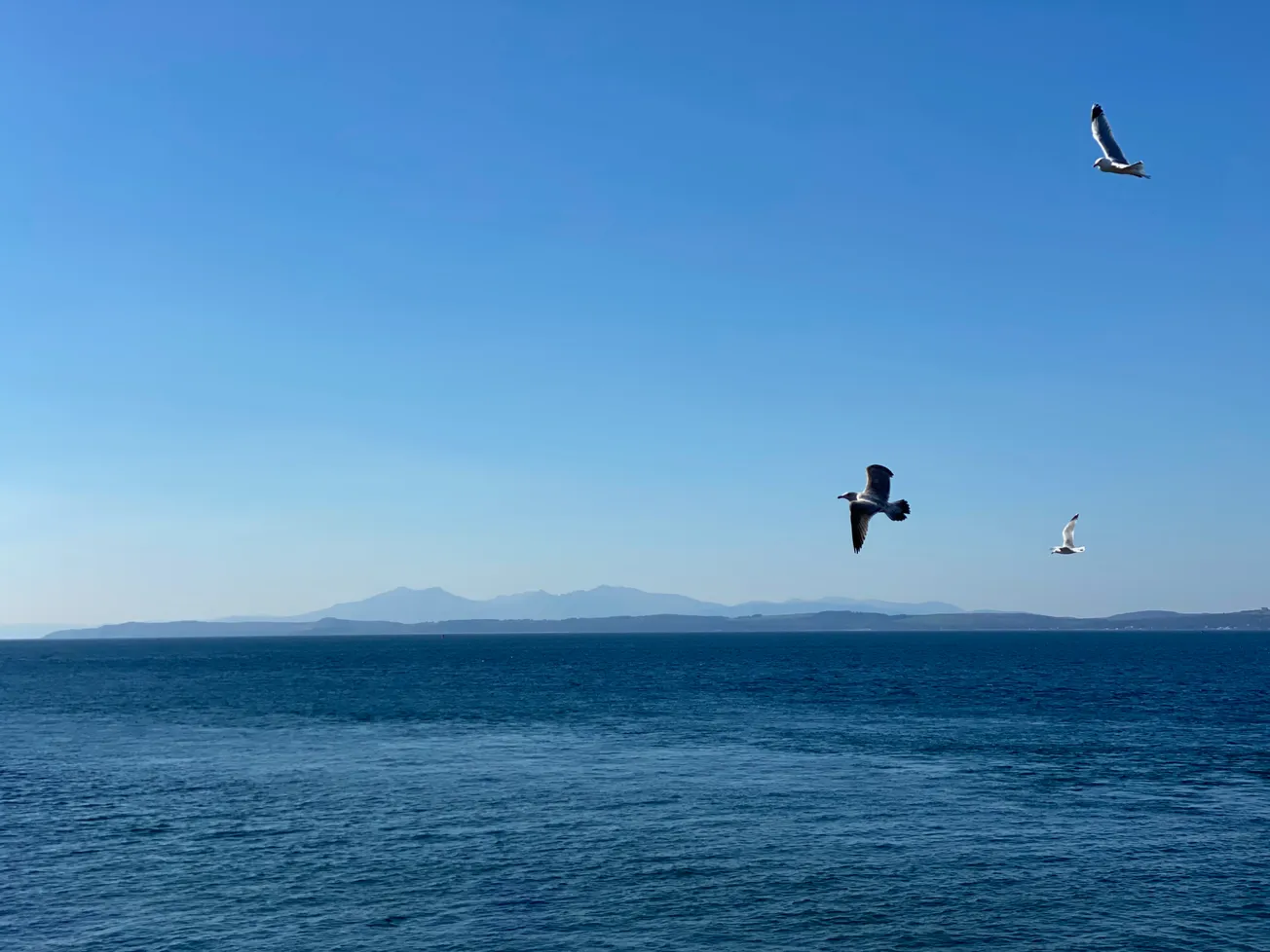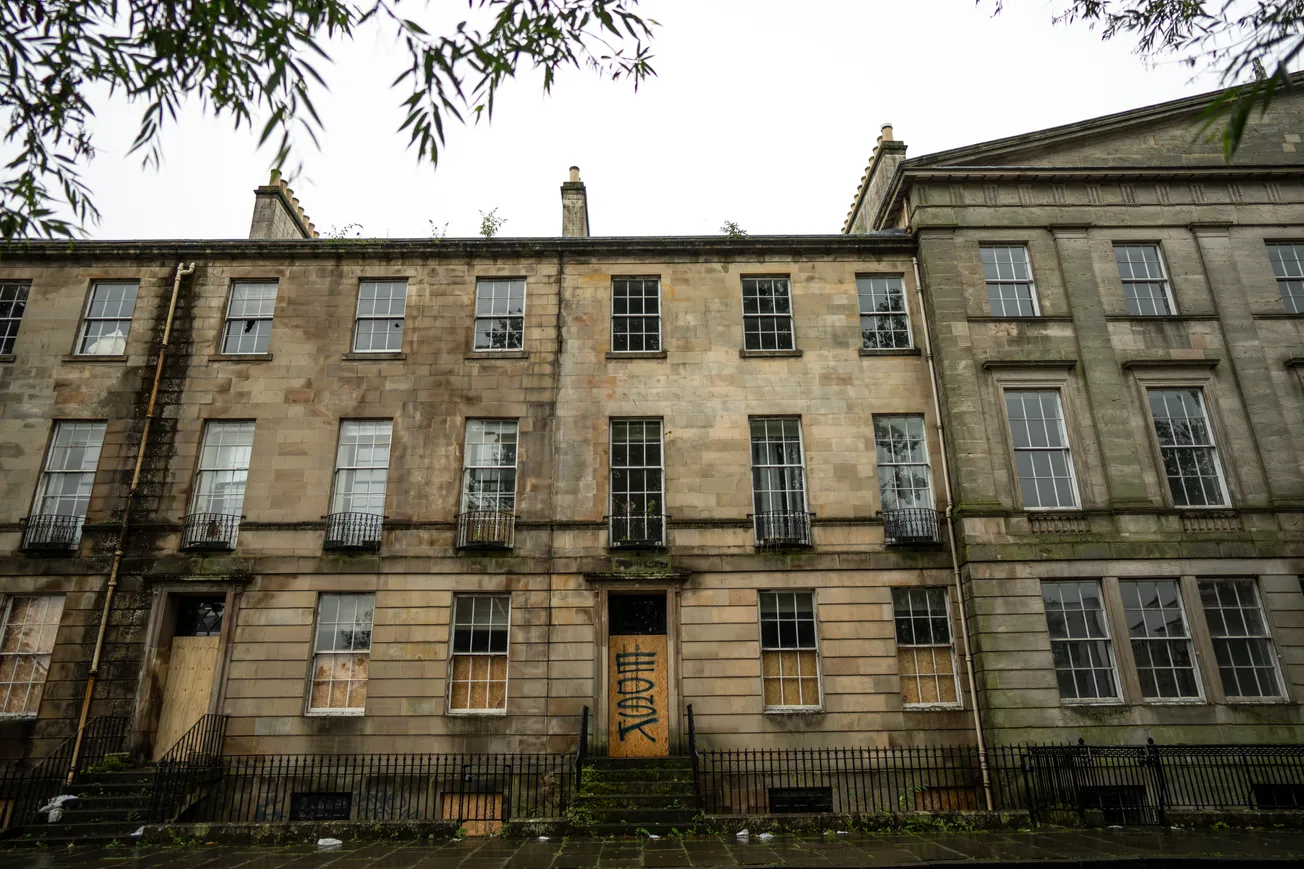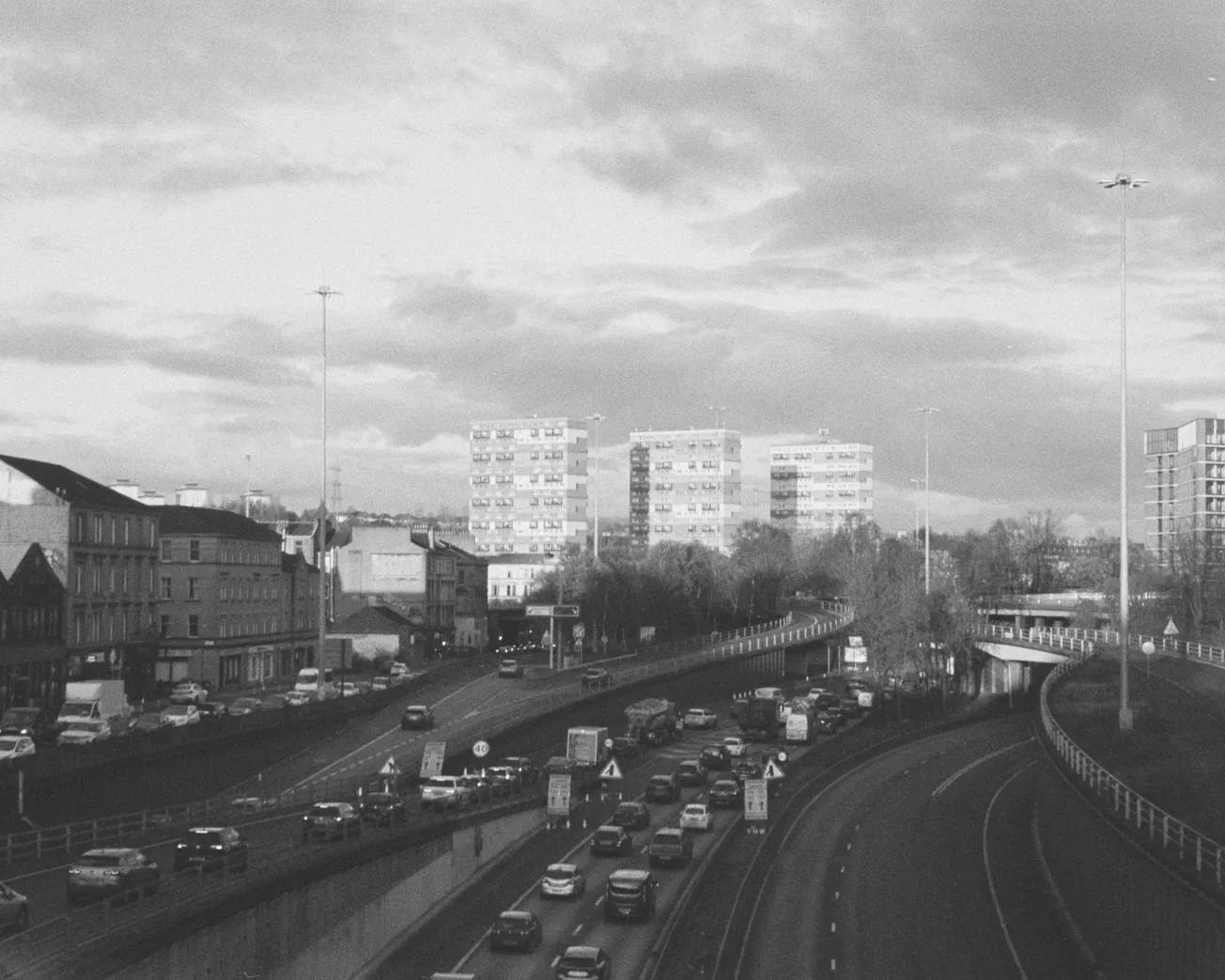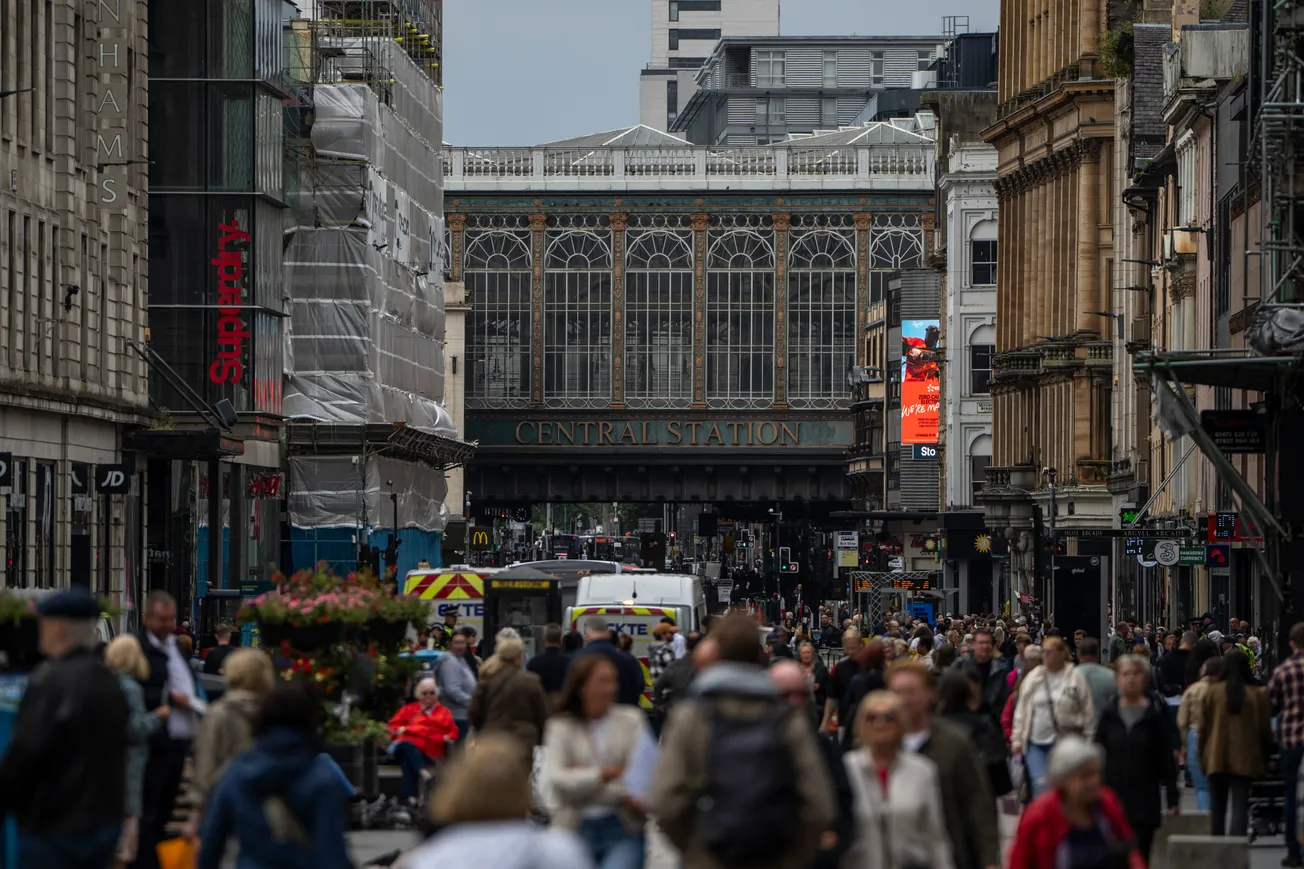A different sort of weekend read in your inbox today, folks. We've got some news to share tomorrow, which we’re a wee bitty excited to tell you all about. It's been one of those weeks here at Bell HQ, so in the meantime we thought we'd give you something a bit lighter for your perusal, before things heat up again soon — we promise.
Cuttin' aboot Bute
Last week, what with Spring truly blooming, I hopped on a late morning train out of Glasgow. It’s been a hectic few months, and my week off happened to happily coincide with the warm weather. It was a welcome chance to come up for air, reflect on the past half year at the good ship Bell, and get out into the great outdoors to reenergise.
While waiting for the MV Bute to depart, I took in the curvaceous ironwork and sprawling glass roof of one of Scotland’s most splendiferous railway stations, Wemyss Bay, built by James Millar in 1903. The place immediately transports me back to childhood holidays with my dad, anticipating the ice cream awaiting me on the other side of the water. Thirty years on, Bute remains my happy place, a sanctuary away from the frenetic pace of the city. Daydreaming, I rolled my bike down the gangway as cormorants skirted the glassy water and seagulls swooped below the Italianate clock tower. Bute-bound, the ferry floated calmly over the Firth of Clyde, pulling into Rothesay around lunchtime.
After a quick espresso, I cycled southwest out of town, passing school kids in an excitable mood. The climb grew steeper as the sun passed its meridian, and soon I was on the A844, Britain’s quietest A-road, its route undulating through fertile farmland and lambs springing about in the fields.
Arriving at the foot of Suidhe Bhlain, I locked up my bike next to the picturesque hills of Plan Farm and set off on foot. Jaunting up St Blane's Hill as buzzards circled ahead and sheep watched inquisitively, I scrambled to the top of the Carboniferous mound through the gorse, the smell of coconut in the air. I was soon at its peak, overlooking the Sound of Bute, the Cumbraes, and a silhouetted Arran stretching out before me, taking it all in from the triangulation station's 123m elevation.
I bounced down the hillside, and within 20 minutes I was ponderously wandering around St Blane’s Chapel, its ruins neatly nestled in a sheltered dell half a mile north from its eponymous hill. My prayers unanswered, I set off for a dip in Dunagoil bay, the cows watching on in the shadows of the vitrified dun as I plunged into the bracing water. A gaggle of geese crossed the bay, swooping past the Iron Age hill fort as the sun dried me off. I had just enough time to read the LRB with a pint of ale (Jarl, if you're asking) in a beer garden — before cycling back for the ferry via the coast, passing the grand mansions and villas of Mountstuart Road, built for Glasgow’s industrial elite during Bute’s Victorian zenith. Arriving back in Wemyss Bay as the sun began to set, I nipped into the Station Bar for a hauf before jumping on the train back to Central. A day mightily well spent.
What I’ve been reading
My favourite read of the year so far is Vincenzo Latronico’s Perfection, a biting satire of Berlin’s millennial expat set, told through the lives of a vapid graphic designer couple named Anna and Tom. The pair are ostensibly living out their dream as creatives, but the Instagram-sheen of their conspicuous lifestyle soon loses its sparkle, revealing an emptiness that perfectly skewers much of what is wrong with contemporary existence. “The perfect novel for an age of aimless aspiration,” wrote Alice Gregory in the New Yorker.
Its 115 pages are lean like a prized featherweight, profoundly affecting and scathing to a point — even if close to the bone for a, err, millennial creative like myself. I loved the way in which the writer clinically dissects modernity, puncturing the allure of social media with sociological élan, as I myself question the worth of platforms into which I’ve invested way too much of my life; false economies and false prophets. Berlin’s sizeable Scottish community gets a brief menshie, which got me wondering if Latronico ever frequented Neukölln’s Das Gift, once owned by Mogwai’s Barry Burns, which for over a decade sold Buckfast by the glass, pints of T and full Scottish breakfasts. A tonic for our times.
A philosophical musing on sandos
The fine weather has offered an opportunity to eat variations on an egg sandwich in various scenic locations. Admittedly that’s largely been the many quiet corners of Queen’s Park, overlooking the sun soaked city while folks sink beers and stoke disposable BBQs well into the evening. Particularly memorable was an egg mayo number with capers, a squeeze of lemon juice, pickled red onions with chipotle, and as much rocket as I could feasibly fit between the slices of homemade sourdough. Another notable mention for a Freedom Bakery baguette packed with a boiled egg, jalapeño hummus, tomato, avocado and crisps. The latter was enjoyed while overlooking a heather-hued Ben Lomond after successive cold plunges and 15 minute sauna sessions.
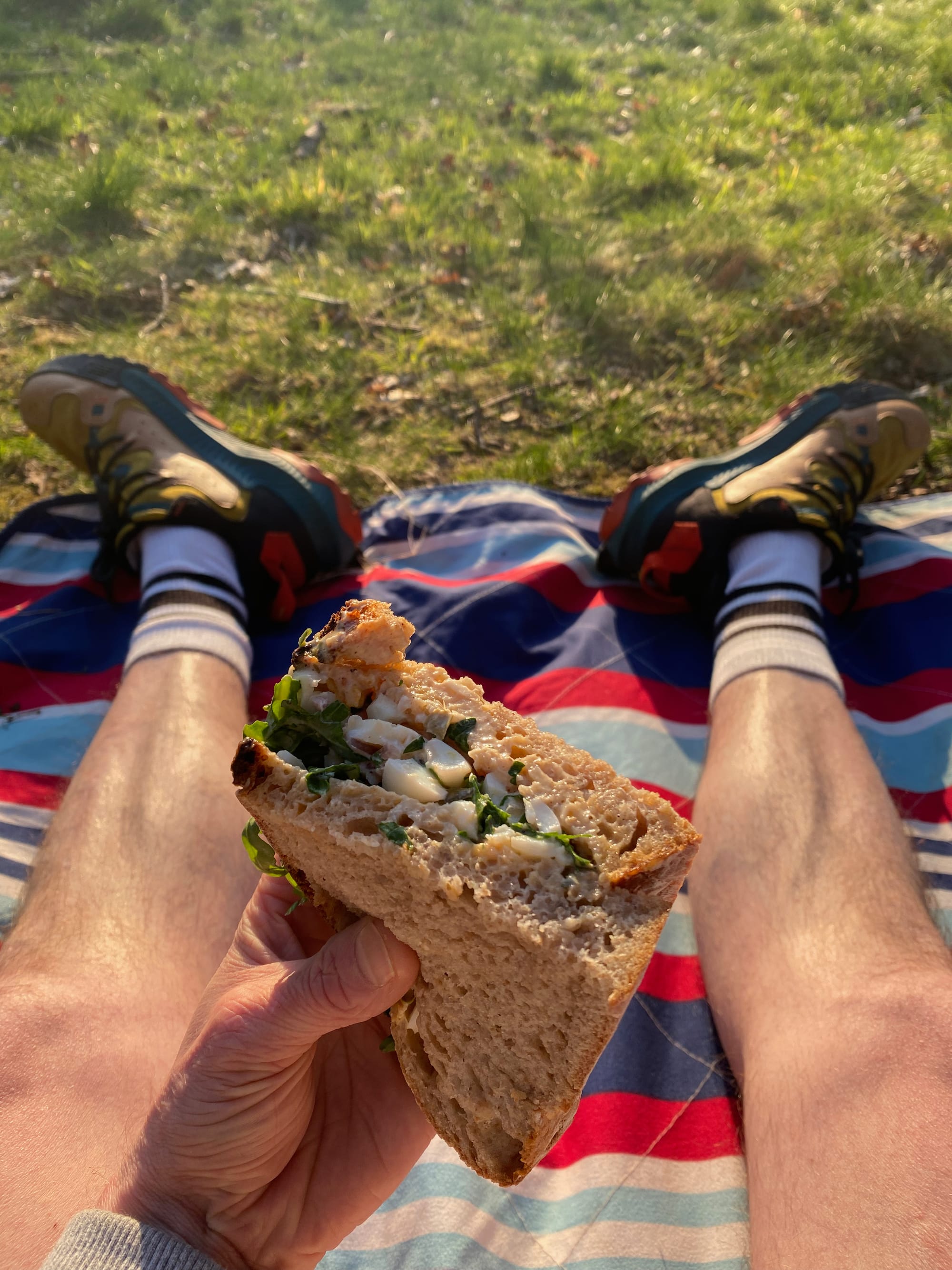
My love affair with sandwiches dates back to the early days of the pandemic when I was able to — hipster bingo alert — make my own bread for the first time in my life. Once the smell of freshly baked bread had filled the air, and the loaf subsequently cooled, I would carefully construct these precisely engineered vehicles of flavour and texture. Cycling to a quiet spot by a river in Linn or Pollok, I would unwrap the paper parcel and behold my labours, before delighting in the heady joys of something so deceptively simple, yet complex. The sandwich offers an infinite set of possibilities, endless iterations of a theme; they contain multitudes. I would happily spend the rest of my life workshopping sandos.
A story I’m working on
I’m currently wrapping up a six-part podcast series on youth culture across the UK, which happens to have coincided with Adolescence, and the ensuing national conversation the TV series has triggered about the manifold ways modern society is failing the younger generation. Finishing up production on the final episode, I was brought to the edge of tears on several occasions as I listened to Emily Cutts talking about the work of the G20 Youth Project on the Wyndford Estate. If there is an antidote to the growing challenges faced by children and young adults today, it looks a lot like the outstanding work G20 have been doing in Maryhill since 2018.
For the past few years, I’ve been reflecting upon my own uneasy relationship to masculinity, my sexuality, the men in my life, and how I’d feel about having a boy of my own one day — and why that fills me with worry that having a hypothetical daughter does not. More than anything, working on this series has given me a profound sense of hope amid what is quite a bleak forecast; I’m terrified by the reality that today’s young people have to go through everything my generation endured, with the Pandora's box of social media on top of it — not to mention everything else this century has thrown at them already.
And yet if we simply listened to young people and asked them for solutions, rather than treating them as a problem — well, then we wouldn't be relying on a Netflix series to make those in power wake up to the fact they are missing in action where young people's futures are concerned.
An unanswered question
We were trying to rank Glasgow’s most treacherous crossings recently. At various flash points in town, pedestrians impatiently throw their lives on the line, all for the sake of a few precious moments. Why wait for the man to turn green when you can simply run the gauntlet of buses, angry taxi drivers and speeding cyclists? More pedestrian crossings might be an idea, but then that would invert the hierarchy of road users, which still seems to favour vehicular transport, even smack bang in the city centre.
In my estimation, the corner of Union and Gordon Street is particularly fraught, as is the risky dash across Oswald and Argyle, an accident waiting to happen. The Four Corners could take the top spot, having been the scene of an accident between a pedestrian and a taxi driver earlier this week (the taxi driver is set to be reported to the Procurator Fiscal), far from the first and unlikely to be the last either. For Moya, it is the Bath Street/Buchanan Street crossing where bipedalists completely lose the heid. But which is the worst offender? Let us know in the comments.
Something I could use your help with
Despite having lived five minutes away from the Govanhill Baths for over half a decade, I’ve stepped inside the building only once, for a sound installation project at Sonica Festival. The paint peeling off the walls and rafters, it was an eerie experience. You could almost hear the ghosts of former bathers who frequented the baths over its 95 year history, before it closed in 2001. Its subsequent occupation, the longest of a public building in British history, was followed by a long period of restoration — which has been held up by various shortfalls in funding in recent years as it nears completion. If you’ve any useful information or memories about the Baths, I’d love to hear them. Drop me a line on robbie@glasgowbell.co.uk
Comments
How to comment:
If you are already a member,
click here to sign in
and leave a comment.
If you aren't a member,
sign up here
to be able to leave a comment.
To add your photo, click here to create a profile on Gravatar.

